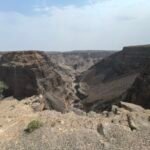Hungary occupies a unique geographical position in Central Europe, lying at the crossroads of Eastern and Western Europe. It is often referred to as the “Heart of Europe.” Geographically, it belongs to Central Europe, but due to its long period within the Soviet-dominated Warsaw Pact, it is often categorized as an Eastern European country.
Although Hungary is relatively small, with an area of less than 100,000 square kilometers, it is surrounded by numerous neighboring countries. To the north is Slovakia, the northeast borders Ukraine, the east connects to Romania, the south neighbors Serbia, and the southwest touches Croatia and Slovenia. To the west lies Austria, making Hungary a truly landlocked country, encircled by nations with which it shares both historical ties and old rivalries.
On the map, Hungary’s terrain resembles a large basin. The Carpathian Mountains rise in the northeast, while the Alps, the Balaton Uplands, and the Baranya Hills shape the west. To the south lies Lake Balaton, the largest lake in Central Europe, covering nearly 600 square kilometers. The country’s topography slopes from the higher western and northern regions toward the lower eastern and southern plains.
The Danube River, often called the “Mother River of Europe,” flows from southern Slovakia into Hungary, dividing the country into eastern and western halves. Despite its mountainous regions, Hungary largely consists of the Danube’s alluvial plains, resulting in fertile soil and scenic landscapes. The climate is influenced by both the Mediterranean and Atlantic currents, bringing warm winters and cool summers, creating pleasant conditions throughout the year.
Though Hungary lacks significant mineral resources and its natural wealth is modest, the country’s picturesque landscapes, mild climate, historic cities, and rich cultural heritage make it a vibrant tourism destination. With each season offering something unique, Hungary is an exceptional year-round travel destination that appeals to visitors seeking history, nature, and culture.
Szeged – The City of Sunshine
Traveling north from Romania into Hungary, the first city you reach is Szeged. Compared to towns in Romania, Szeged immediately feels like a step up in terms of urban development and atmosphere.
Szeged is the largest city in southeastern Hungary, located at the crossroads where Hungary, Romania, and Serbia meet. Its strategic location has made it a battleground throughout history, suffering destruction many times. The city was devastated during the Mongol invasion and, after being rebuilt, was ravaged repeatedly by the Ottoman Empire. By the 16th century, it had fallen completely under Ottoman control, becoming a regional administrative center.
In 1879, a catastrophic flood destroyed nearly every building in the city. During both World Wars, Szeged endured heavy damage, especially in World War II, when it suffered significant losses in both lives and infrastructure. It wasn’t until the post-war period that Szeged entered a phase of recovery and growth. The discovery of oil in 1965 further spurred economic development, giving the city a renewed sense of vitality and restoring some of its former glory.
Szeged is known for its beautiful natural surroundings, with the Tisza River, Hungary’s second-largest river, flowing through the city and dividing it in two. Thanks to its southern location and long hours of sunshine, Szeged has earned the nickname “City of Sunshine.” Walking through the city, you’ll notice the well-preserved architecture, with every building meticulously maintained.
Many of Szeged’s streets are named after major European cities, such as Rome Avenue, Moscow Avenue, and Berlin Avenue, giving the city a cosmopolitan feel. Notable landmarks include the Szeged Synagogue, the Votive Church, the Museum of Szeged, the City Hall, the Water Tower, and the National Theatre of Szeged.
Just 30 kilometers outside the city lies the Hungarian National Historical Memorial Park, a must-visit for those interested in the country’s rich cultural heritage.

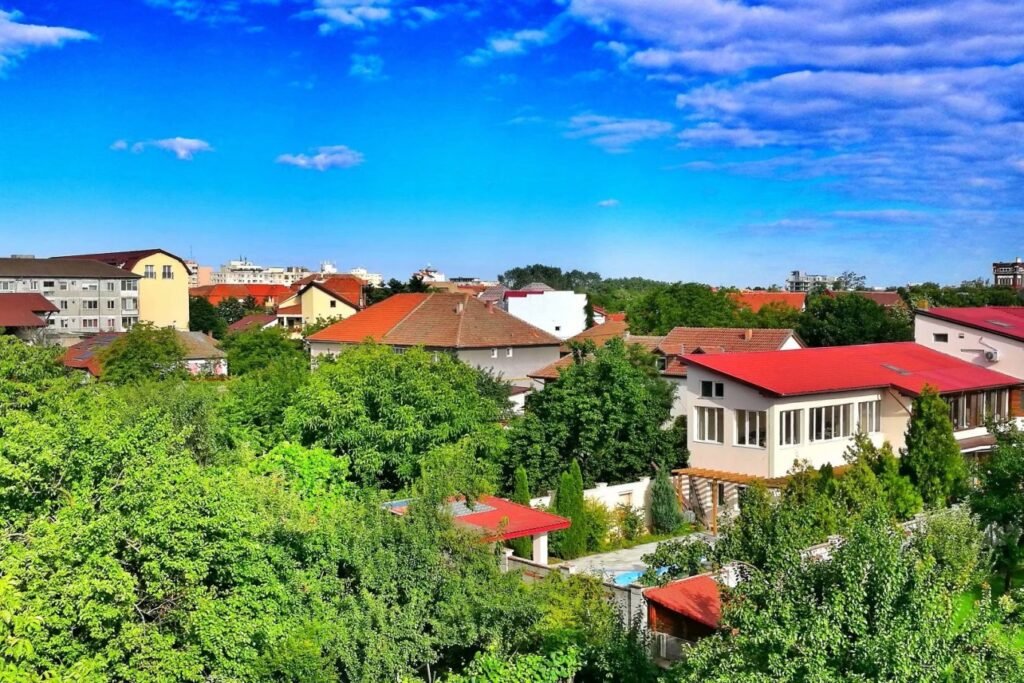
Szeged Votive Church (Szegedi Dóm)
The Votive Church of Szeged is undoubtedly the city’s most iconic building. Its two towering spires can be seen from afar, even from the banks of the Tisza River. Also known as the Basilica of Our Lady of Szeged or simply the Szeged Cathedral, it serves as the main church of the Szeged-Csanád Diocese and is the fourth largest church in Hungary.
The church was designed by Frederick Schulek, with construction overseen by Ernest Ferk. Work began in 1913, but the outbreak of World War I delayed its completion until 1931. Built in the neo-Romanesque style, the church has been continuously enriched with sculptures and reliefs over the years.
Inside, the church houses various works of art, with the most striking feature being the grand dome’s ceiling, adorned with a mosaic image of the Virgin Mary. In front of the church lies a vast square covering 12,000 square meters, the same size as Venice’s Piazza San Marco. On the other side of the square, the space opens directly to the University of Szeged.
Standing on the expansive square, listening to the melodious chimes of the musical clock, is a delightful artistic experience. While the church offers free entry, there is an admission fee for those who wish to climb the tower for a panoramic view of the city.

New Synagogue (Új Zsinagóga)
The New Synagogue of Szeged, also known as the Szeged Synagogue, is another of the city’s iconic landmarks. This impressive structure stands out with its grand exterior and exquisite interior decorations, making it one of the few large synagogues in the region.
Built in 1907, the synagogue was designed by Hungarian Jewish architect Lipót Baumhorn. It masterfully blends various classical and modern architectural styles, creating a harmonious and aesthetically pleasing design. This unique combination has become known as the “Hungarian Style,” influencing the design of many other synagogues built afterward.
Praised as one of the most beautiful synagogues in Hungary, the New Synagogue has become a source of pride for the city of Szeged.
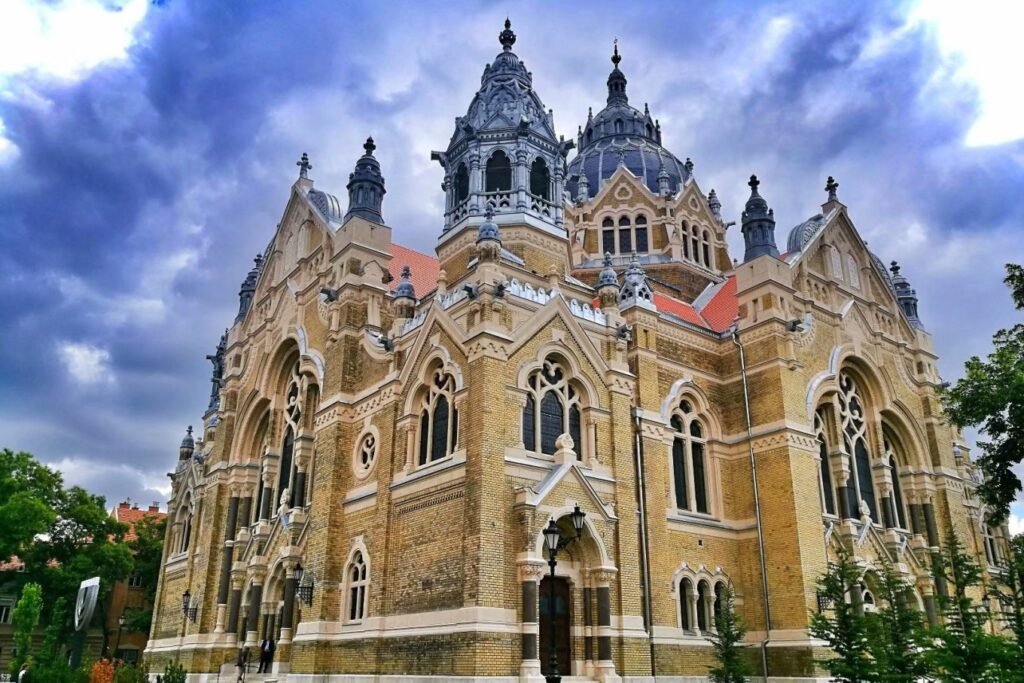
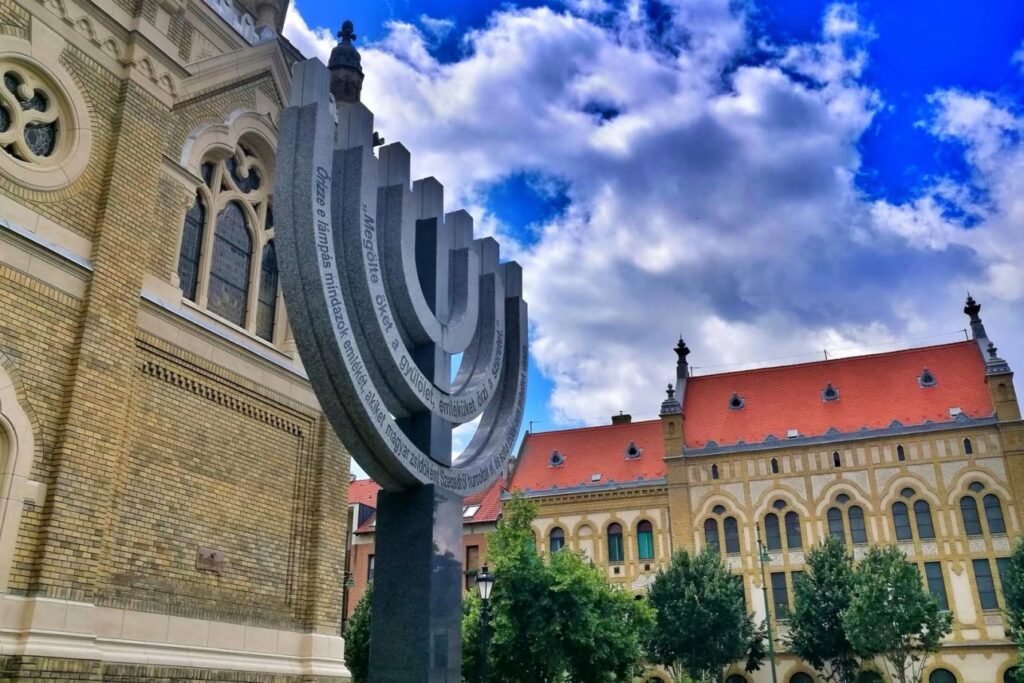
King Béla IV Equestrian Statue
The equestrian statue of King Béla IV stands proudly in Széchenyi Square, surrounded by lush green lawns and vibrant flower-filled gardens. King Béla IV, one of Hungary’s most significant historical rulers, is depicted in a majestic pose, exuding an air of authority and grandeur.
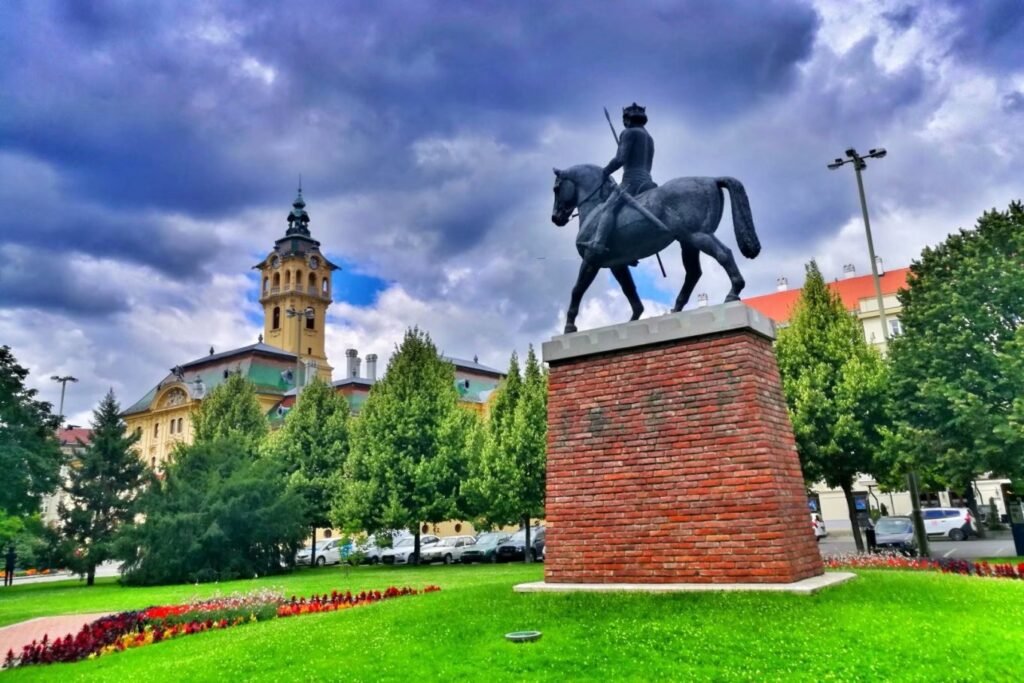
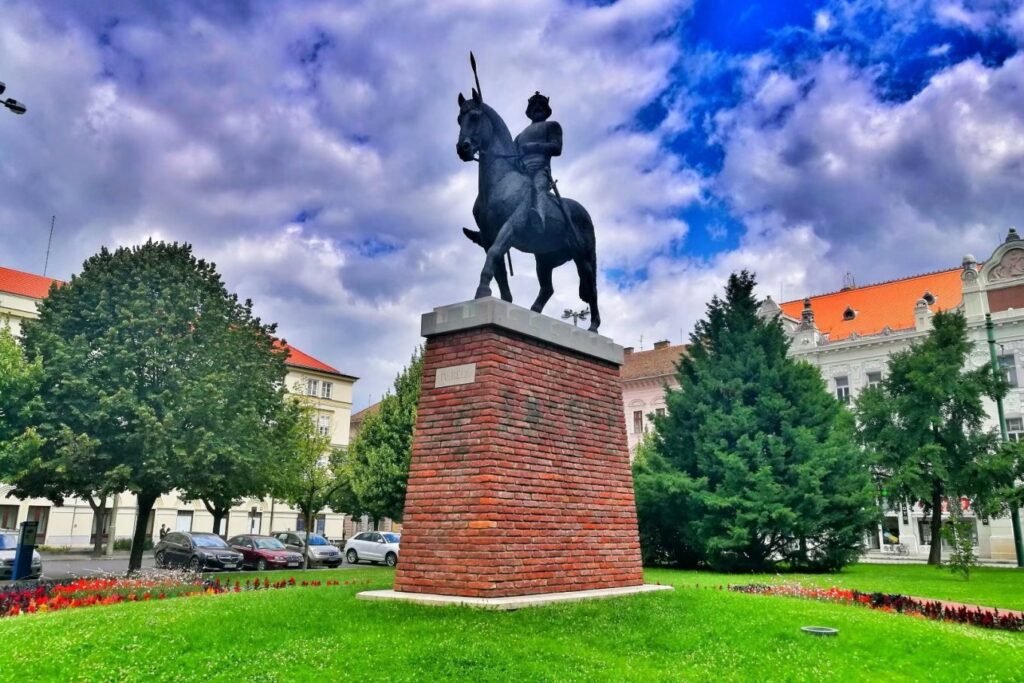
Széchenyi Square (Szechenyi Square)
Széchenyi Square is the most important square in Szeged. It faces the City Hall and is seamlessly connected to a beautiful park. The square features sculptures and fountains, while the park is filled with trees and flowers, creating a tranquil environment with birdsong and floral scents—a perfect spot for relaxation.
Many of the city’s major events are held here, including the Pálinka Music Festival, the Wine Festival, and the annual Christmas Market, making Széchenyi Square a vibrant hub of activity throughout the year.
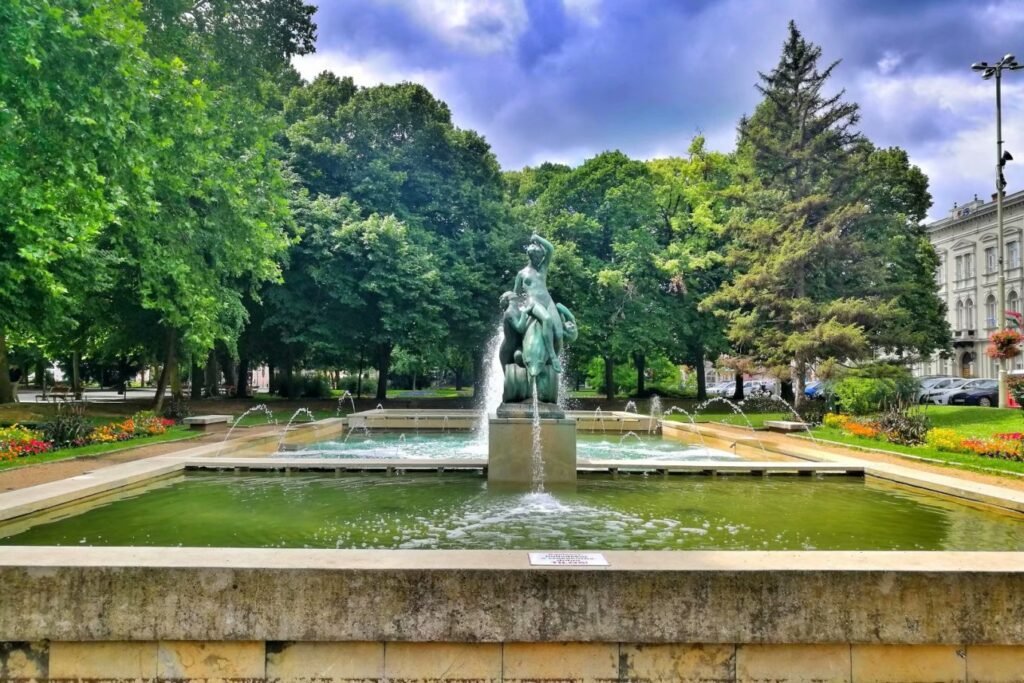
Szeged Town Hall (Seged Town Hall)
The Szeged Town Hall stands proudly on Széchenyi Square, with its green roof and bright yellow façade. This resilient building, blending Zopf and Neo-Baroque architectural styles, has become a monumental symbol of the city. Its eclectic appearance reflects the many reconstructions it has undergone over the centuries.
Originally built in 1728, the building was reconstructed in 1799 after suffering damage. Following the devastating flood of 1879, it was rebuilt once again in 1883, with additional floors added, resulting in the structure we see today.
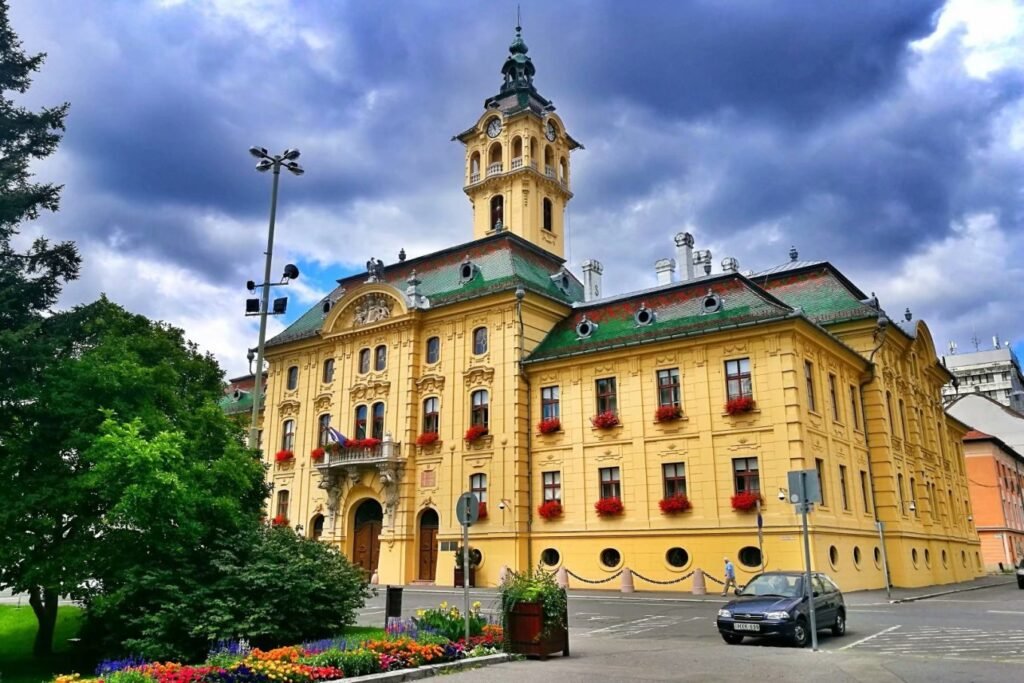
Statue of Lajos Tisza
The statue of Lajos Tisza stands in the park on the edge of Széchenyi Square. This memorial sculpture, carved from marble and set on a limestone pedestal, is said to be the largest figurative statue ever created by Hungarian sculptor Alajos Stróbl.
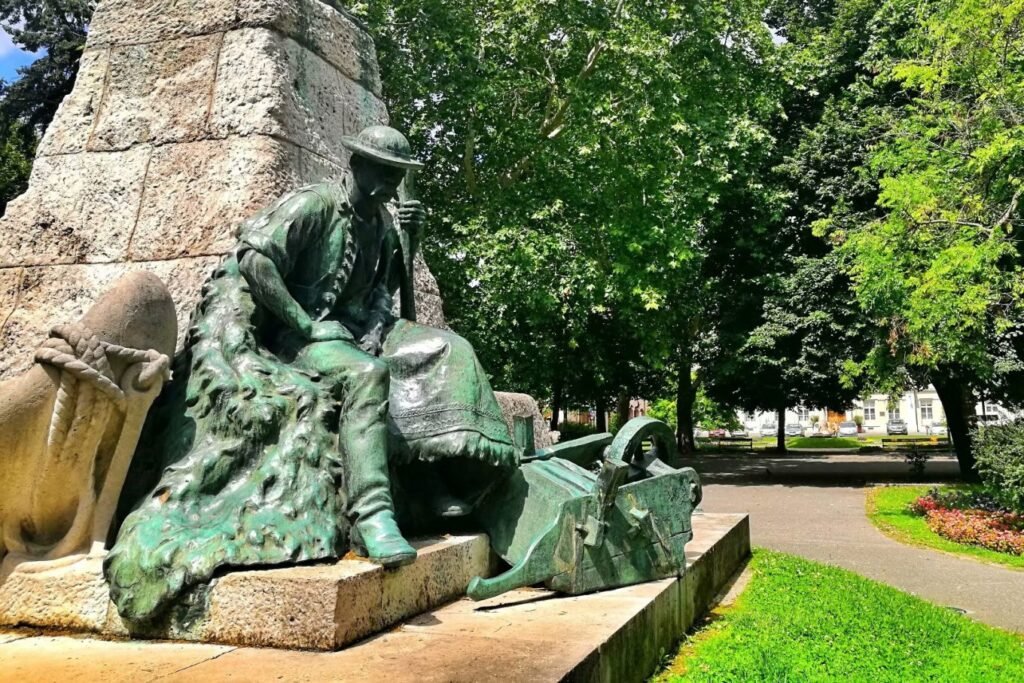
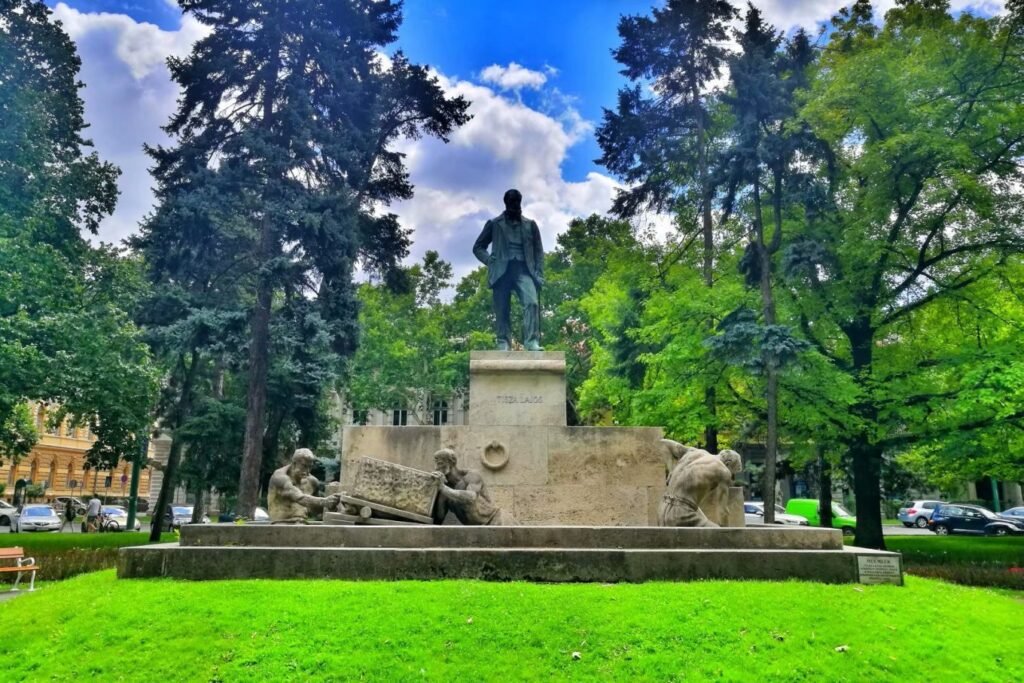
Millennium Fountain
The Millennium Fountain, created by Klára Tóbiás, was erected in 2000 in front of the Kárász House to commemorate the 1,000th anniversary of the coronation of King Saint Stephen. The previous sculpture that once stood here was relocated elsewhere.
The fountain’s central design features four bronze lions surrounding a golden sphere topped with a cross, a composition rich in symbolic meaning.
Statue of Lajos Kossuth
The statue of Lajos Kossuth was erected to honor the renowned leader of the Hungarian Revolution of 1848. It stands in a rectangular square in the city center, facing the Millennium Fountain. This location marks the entrance to the pedestrian street in the commercial district, surrounded by terrace courtyards, restaurants, and shops, making it a lively and bustling area.
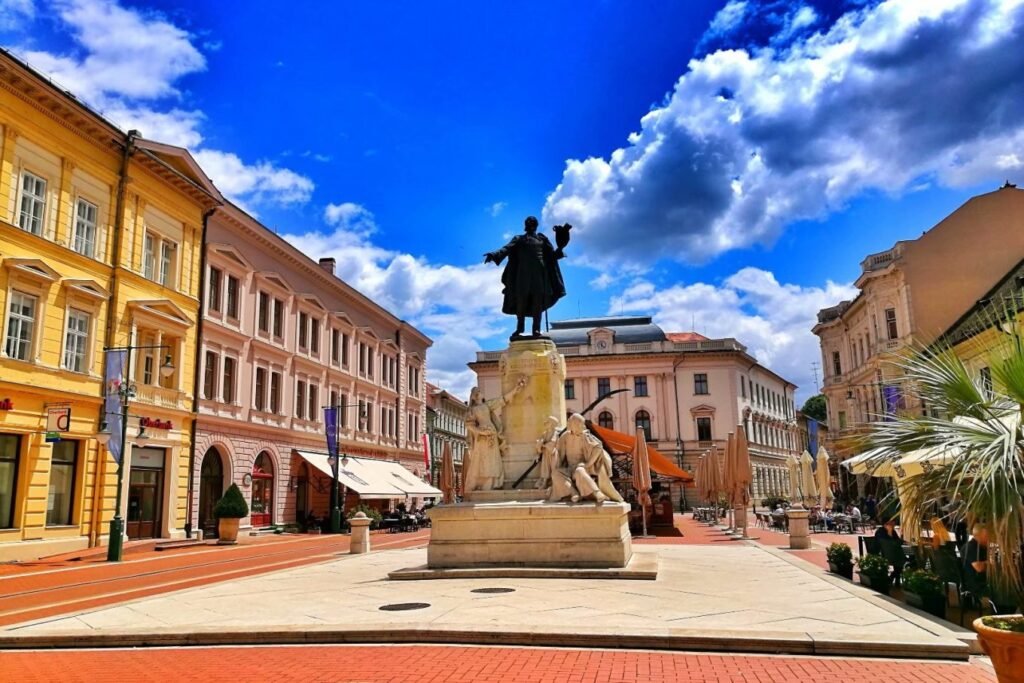
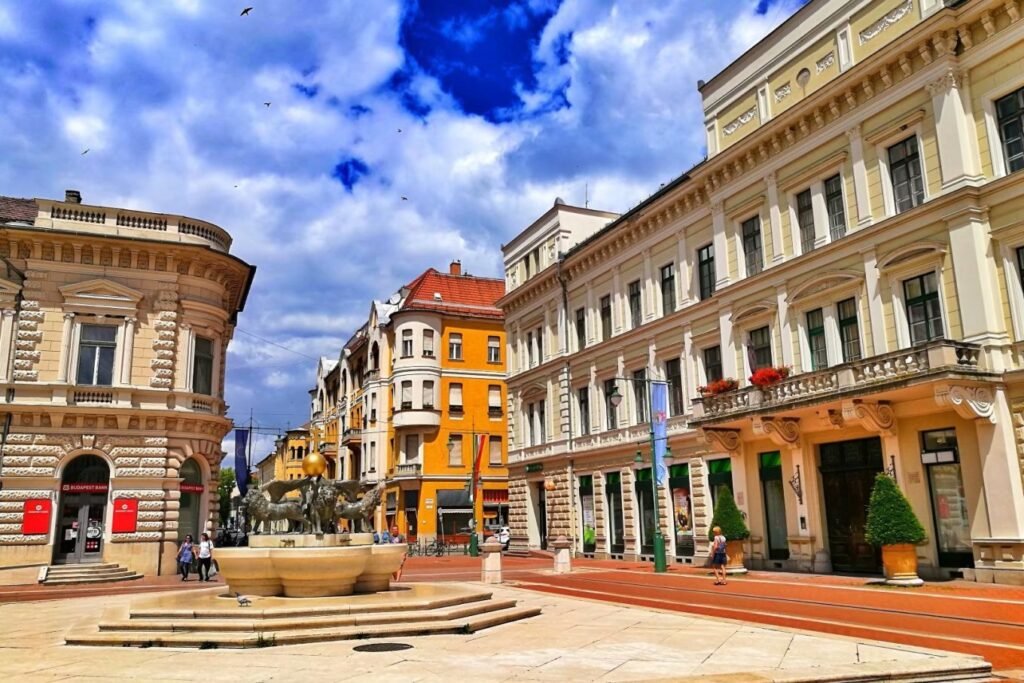
Heroes’ Gate (Heroes’ Gate)
The Heroes’ Gate is an arched gateway built beneath a large building along the main road, located near the University of Szeged and the Votive Church. Anyone taking a tram to the cathedral will inevitably pass through this gate.
The gate was constructed to honor the 12,000 soldiers from Szeged who lost their lives during World War I. Beneath the arch stands a soldier’s statue, and the interior walls are adorned with large, colorful murals, reminiscent of church frescoes.


Kecskemét
Heading north from Szeged, about 80 kilometers from Budapest, you’ll arrive in Kecskemét, the capital of Hungary’s Bács-Kiskun County. Situated on the central plain between the Danube and Tisza rivers, this area is known for its fertile, green landscapes. The name “Kecskemét” originates from the word “goat,” referencing the region’s expansive grasslands.
Founded in the 4th century and flourishing by the 14th century, Kecskemét reflects a distinct Germanic influence in its architecture. Notably, the German automotive giant Mercedes-Benz has established a factory here.
The city’s architecture is particularly striking, with many beautiful buildings concentrated around the central square, exuding a strong medieval charm. Highlights include the Baroque-style Franciscan Church, the Romantic-style Synagogue, and the Kecskemét City Hall, renowned for its vibrant, colorful façade.
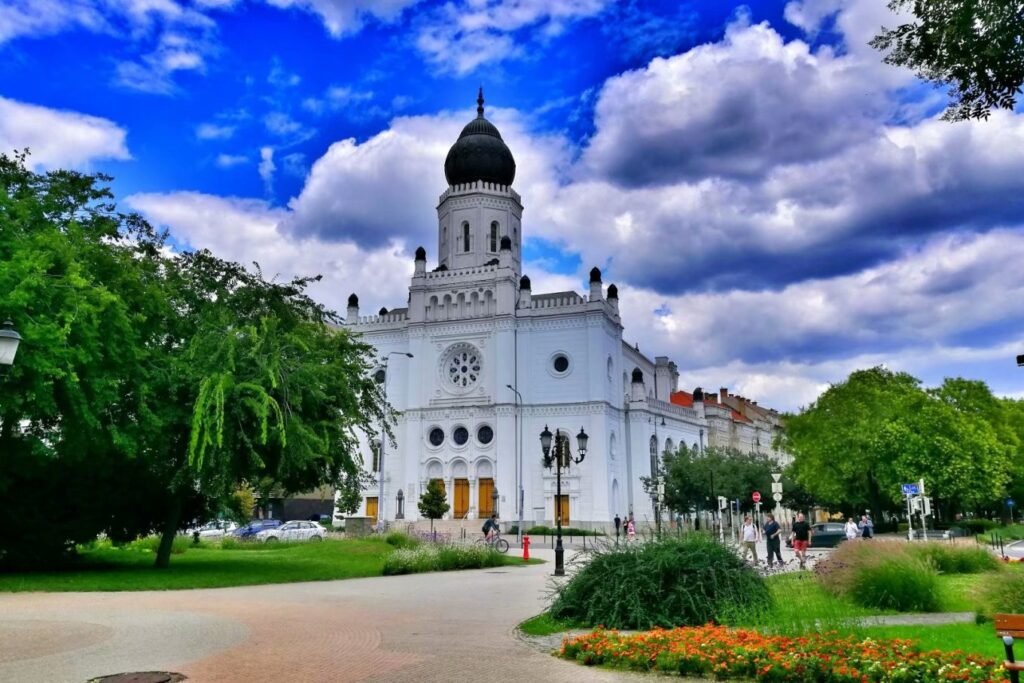
Former Synagogue (Volt zsinagóga)
The Former Synagogue stands next to the Ornamental Palace, directly facing Liberty Square. Its white façade makes the building particularly striking. However, the main doors remain closed, leaving it unclear whether the synagogue is not open to the public or has been permanently shut.
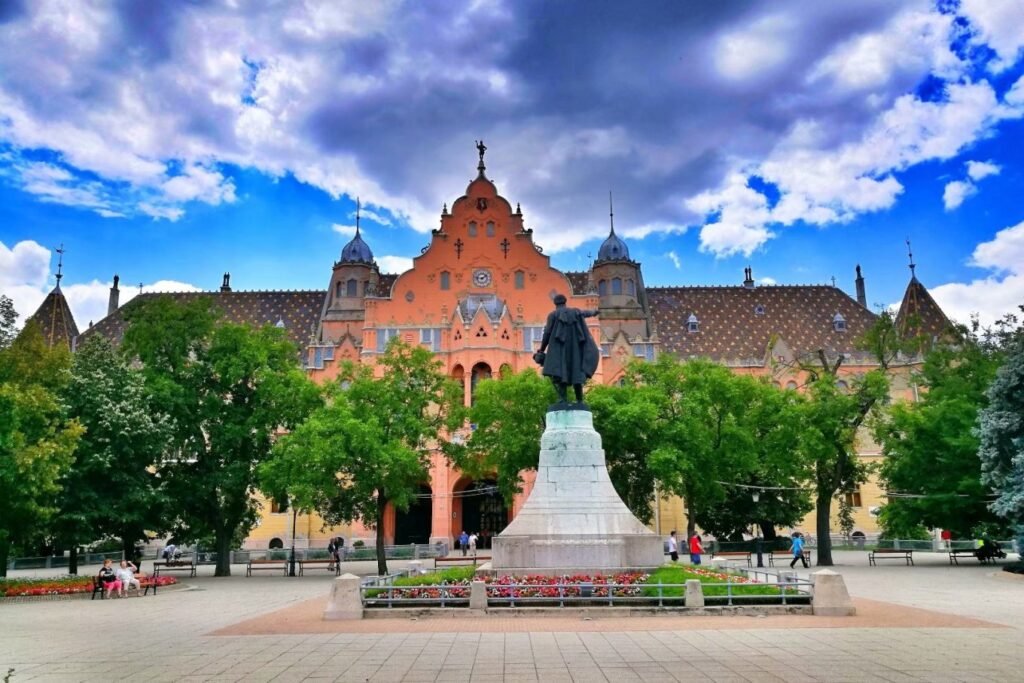
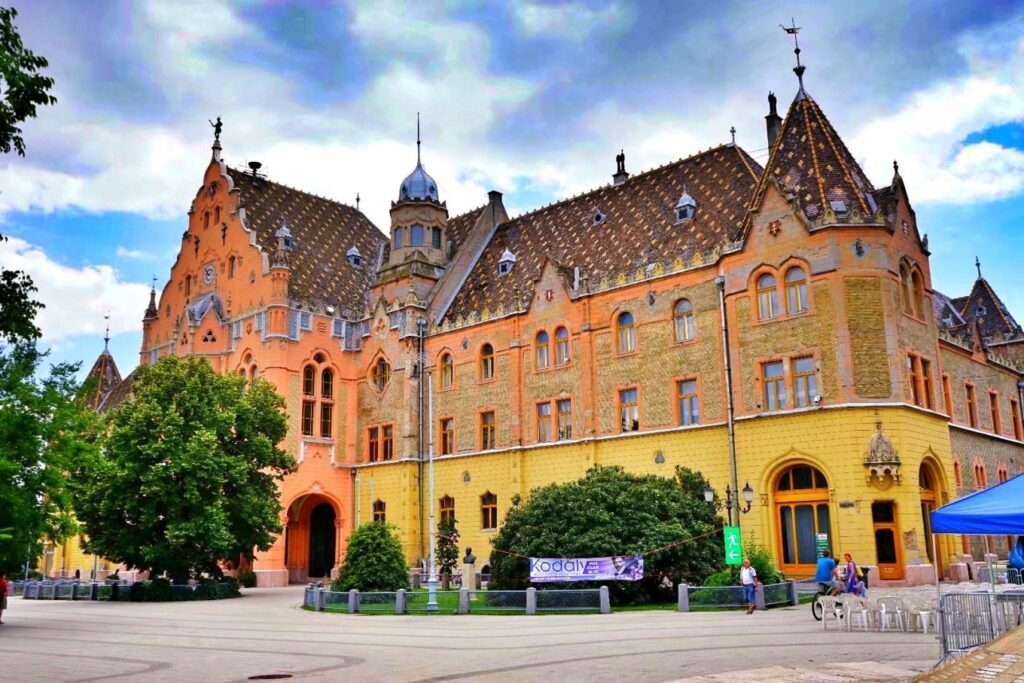
Kecskemét Town Hall (Kecskemet Town Hall)
Kecskemét Town Hall is the city’s most iconic building and a must-visit landmark for tourists. Located on the main square in the city center, it was constructed between 1893 and 1897 and is one of the early works of renowned Hungarian architect Ödön Lechner.
The building’s bright reddish-brown façade makes it stand out prominently. Visitors can also enjoy the sound of the town hall’s chimes, which ring on the hour. The building is open to the public, with an entrance fee of 500 forints per person.
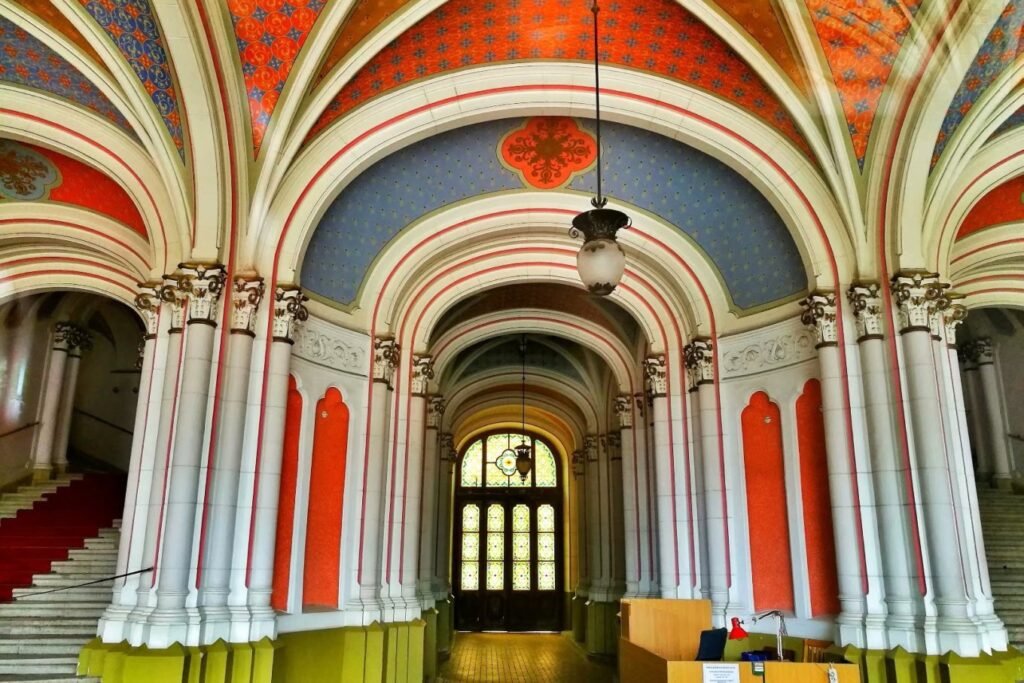
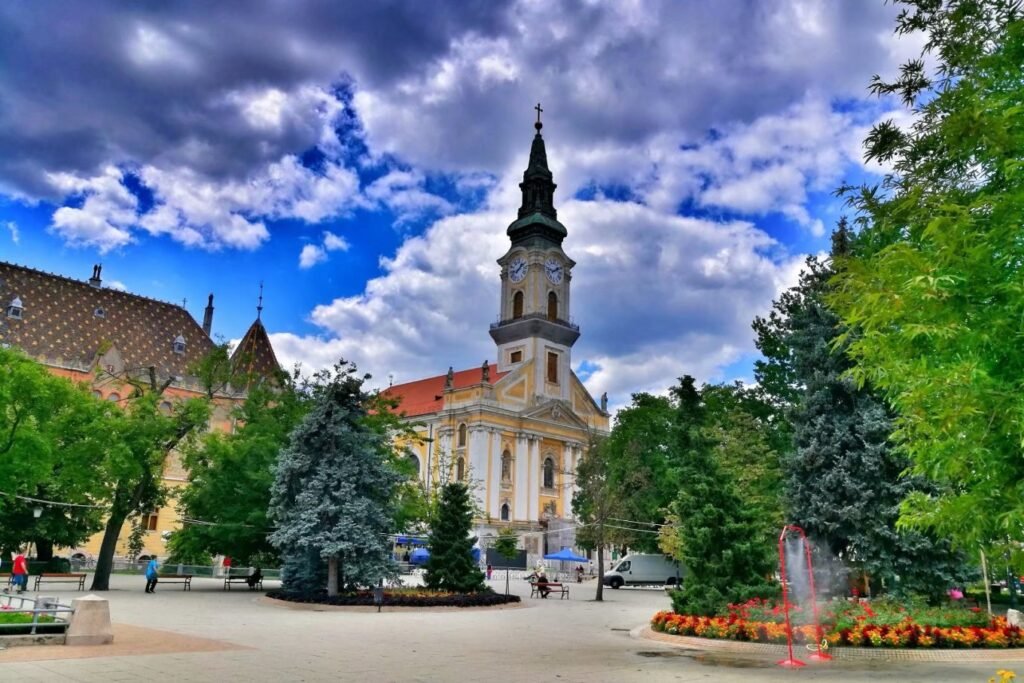
Co-Cathedral of the Ascension of the Lord
Facing the Town Hall, the Co-Cathedral of the Ascension of the Lord is an elegant Catholic church. Originally built in the 14th century, it is commonly known as the Friars’ Church or the Franciscan Church among locals. It has long been the largest church in Kecskemét and within its archdiocese.
The current structure was rebuilt between 1774 and 1799. While the original church was Romanesque in style, the reconstruction gave it a Baroque exterior. Inside, the church features a spacious interior with simple yet tasteful decor. Its excellent acoustics make it the traditional venue for the city’s annual Christmas choir and organ concerts.
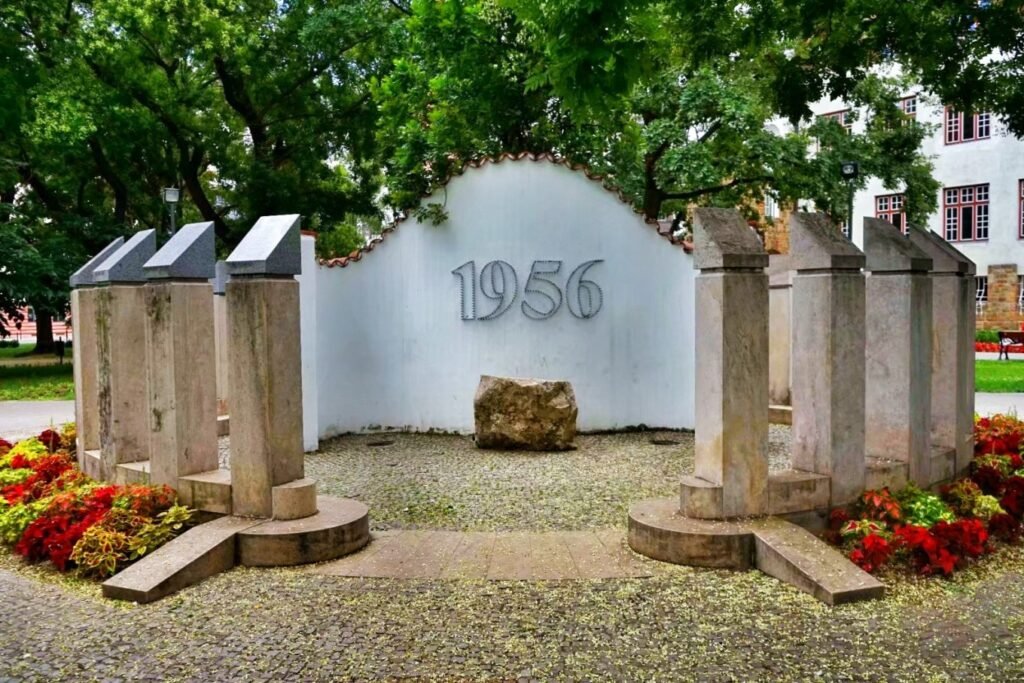
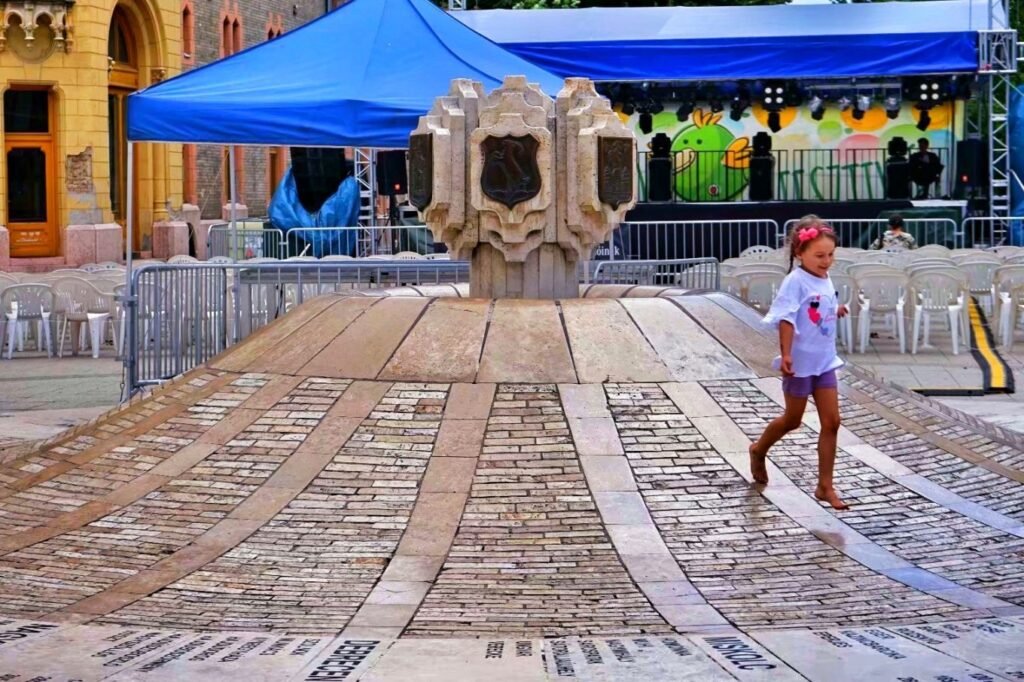
1956 Memorial (1956-os emlékmű)
The 1956 Memorial commemorates the Hungarian uprising that called for socialist reforms. The event ultimately led to Soviet intervention, resulting in the removal of Prime Minister Imre Nagy and a reshuffle of the central leadership. Similar memorials can be found in many places across Hungary.
This particular memorial features a simple design. However, the combination of the monument with the nearby fountain creates a relaxed atmosphere. Surrounded by trees and benches throughout the park, it also serves as a pleasant spot for rest and relaxation.
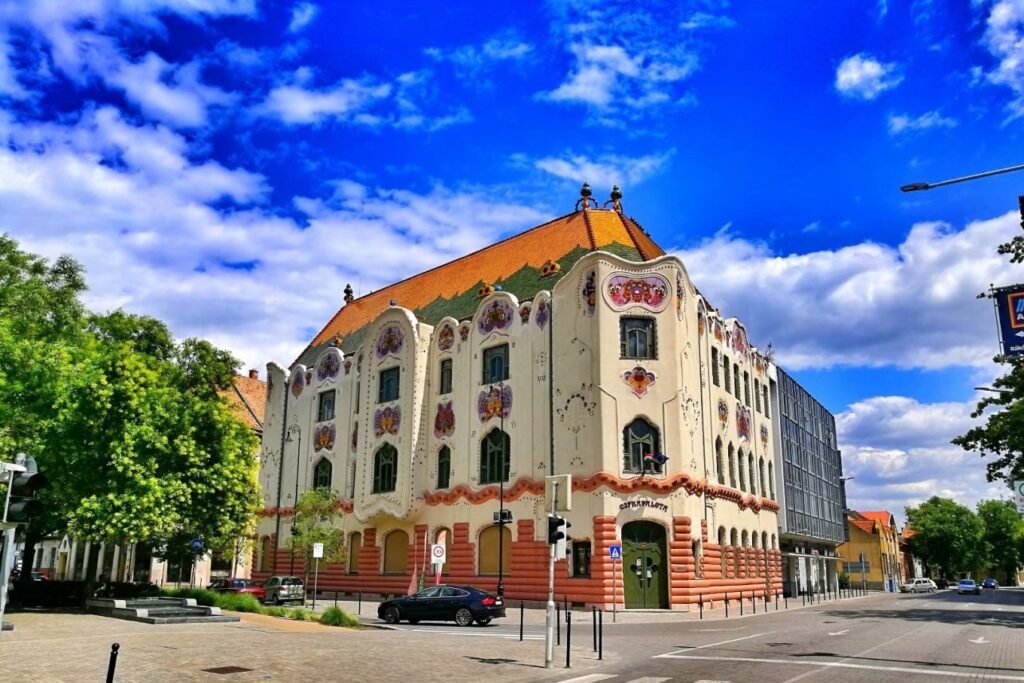
Cifra Palace (Cifra Palace)
Cifra Palace is the most famous mansion in Kecskemét, built in 1902. The building’s standout feature is the vibrant enamel decorations on the lower façade, with the upper two floors adorned with folk art-inspired patterns on undulating surfaces. Its roof is covered with glazed tiles, similar to those on the Town Hall, radiating a neo-Renaissance style.
Over the years, the building has served various purposes, including apartments, shops, and even a casino. After World War II, it briefly housed the trade union headquarters. Today, it is home to the Kecskemét Gallery, offering four thoughtfully curated art exhibitions.


